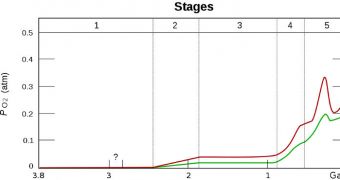Millions of years ago, the planet's biosphere underwent a process known as oxygenation, during which oxygen concentrations in its atmosphere and oceans spiked. Experts are now starting to shed light on the mystery surrounding this event.
Before oxygenation occurred, the atmosphere had a significantly different chemical composition than it does today. That makeup couldn't have allowed for the huge biodiversity of lifeform Earth hosts today, experts believe.
Thanks to new investigations, scientists are now getting closer to understanding how the events took place, and how the planet looked like shortly before and immediately after they occurred.
One interesting discovery, recently made by an international team of scientists, shows that vascular plants may have been around before the oxygenation events. This implies they appeared and evolved under low-oxygen concentrations, which is something experts had no idea was possible.
Arizona State University (ASU) biogeochemist Ariel Anbar, the leader of the group, found an interesting correlation between the emergence of predatory fish and vascular plants, and a spike in atmospheric oxygen concentrations. This happened some 400 million years ago.
The logical assumption to make here is that whatever animals and plants existed before this time appeared, developed and evolved under considerably lower oxygen concentrations than today.
“There has been a lot of speculation over the years about whether or not oxygen in the atmosphere was steady or variable over the last 500 million years,” says Anbar, who is also the leader of the ASU Astrobiology Program.
“This is the era during which animals and land plants emerged and flourished. So it's a profound question in understanding the history of life,” he goes on to say.
“These new findings not only suggest that oxygen levels varied, but also that the variation had direct consequences for the evolution of complex life,” the expert argues, quoted by Daily Galaxy.
He explains that Earth's atmosphere had little to no oxygen in its composition until about 2.3 billion years ago. On the other hand, the planet itself is 4.5 billion years old, and lifeforms have been around long before the atmosphere resembled what we have today.
The new “data indicate that early animals evolved in an environment with less oxygen than today. It's always satisfying when we can demonstrate how an environmental change drove biological evolution,” Anbar adds.
He says that the new work was made possible by funds secured from the Danish National Research Foundation, the Danish Council for Independent Research, the Swedish Research Council, the NASA Astrobiology Institute team at ASU and the NASA Exobiology Program.

 14 DAY TRIAL //
14 DAY TRIAL //